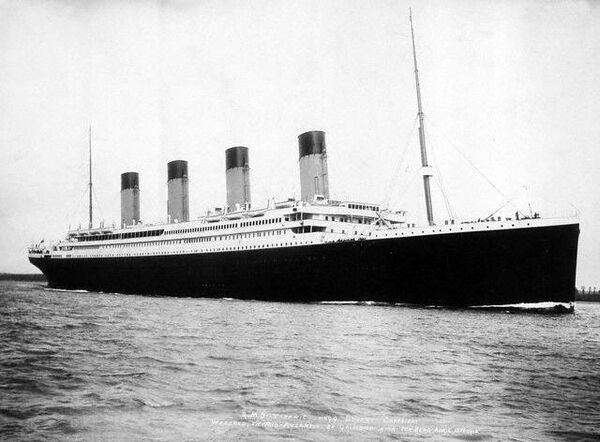Scientists and shipbuilders agree that the Titanic could have been saved or at least kept afloat for two or three hours longer. In this case the RMS Carpathia, which was the first to arrive at the scene of the disaster, would have had enough time to take all the passengers on board. How could the Titanic and the passengers have been saved? Russian naval engineer Yuri Sarukhanov suggests several solutions.
Flooding the stern compartments
A powerful enough after trimming moment should have been created to prevent Deck E (the salon deck) from sinking and thus to arrest an overflow from the damaged forward compartments. This could have been done by activating the ship’s fire extinguishing system and flooding the stern compartments. The ship would have been stabilized and as it were put on an even keel.
Reducing the flooding volumes of damaged compartments, primarily the second and the subsequent ones
Theoretically this solution is preferable to the counter-flooding of the stern compartments because it leaves all spaces operational and, most importantly, maintains a reserve of buoyancy. But this option can’t have been used without doing some preparatory work first. To reduce the permeability of flooded spaces or spaces that had to be flooded, these should have been filled with submersible objects from the ship’s other upper-level areas.
The problem is that the objects possessing positive buoyancy should have been consigned to those spaces before they started being flooded.
Transporting heavy objects from bow to stern
This banal method is efficient if the crew has more time at its disposal than in the Titanic’s case. Besides, it is a problem to transport heavy objects.
The crew was unprepared for emergencies
A lifeboat boarding drill was planned for April 14, 1912 (the day of the tragedy), but for an unknown reason it was cancelled by Captain Smith. Had the emergency boarding been practised at least once, many more lives would have been saved. Apart from other things, the drill would have demonstrated to the crew that the lifeboats were reliable and their certainty would have been communicated to the passengers and reflected on the number of survivors.
Securing or increasing the watertightness of Deck F or Deck E above the damaged compartments by sealing the hatches that led to the lower spaces of the damaged compartment
These could have been sealed with canvas and boards fastened with stiffeners braced against the upper deck. It was also necessary to seal the skylight on Deck C, through which the forepeak was subsequently flooded. The efficiency of this measure depended on how much the deck’s watertightness would have increased. But even partial watertightness would have certainly slowed down the flooding of the upper-level areas.
Leaving open watertight doors
In this case, the Titanic wouldn’t have had forward trim, her compartments would have been flooded evenly, and she would have kept afloat much longer.
Using the iceberg as a pontoon
This is one of the most difficult and implausible methods but it could have brought about positive results.
Eyewitnesses say that the iceberg was 30 meters high (its displacement was later estimated to be 1,160,000 tons). Had a bow anchor been fastened to the iceberg or the ship’s forward end been pushed upon its flat extremity, the Titanic would have kept afloat until the arrival of ships that were sailing at full tilt to her rescue. A rescue ship could have served as a pontoon upon arrival, if the calm persisted.
Another way to use the iceberg would have been to put a loop of joined stern anchors under the iceberg in order to push down the stern by veering in the anchor chains. In this way the trim would have been corrected, preventing the forward end from sinking and the safe compartments from being flooded.
There were many different options, but considering the circumstances and the speed with which the Titanic was sinking, it was practically impossible to save the ship.
This post is based on Yuri Sarukhanov’s article in Sudostroyeniye, No. 7, 1992.

